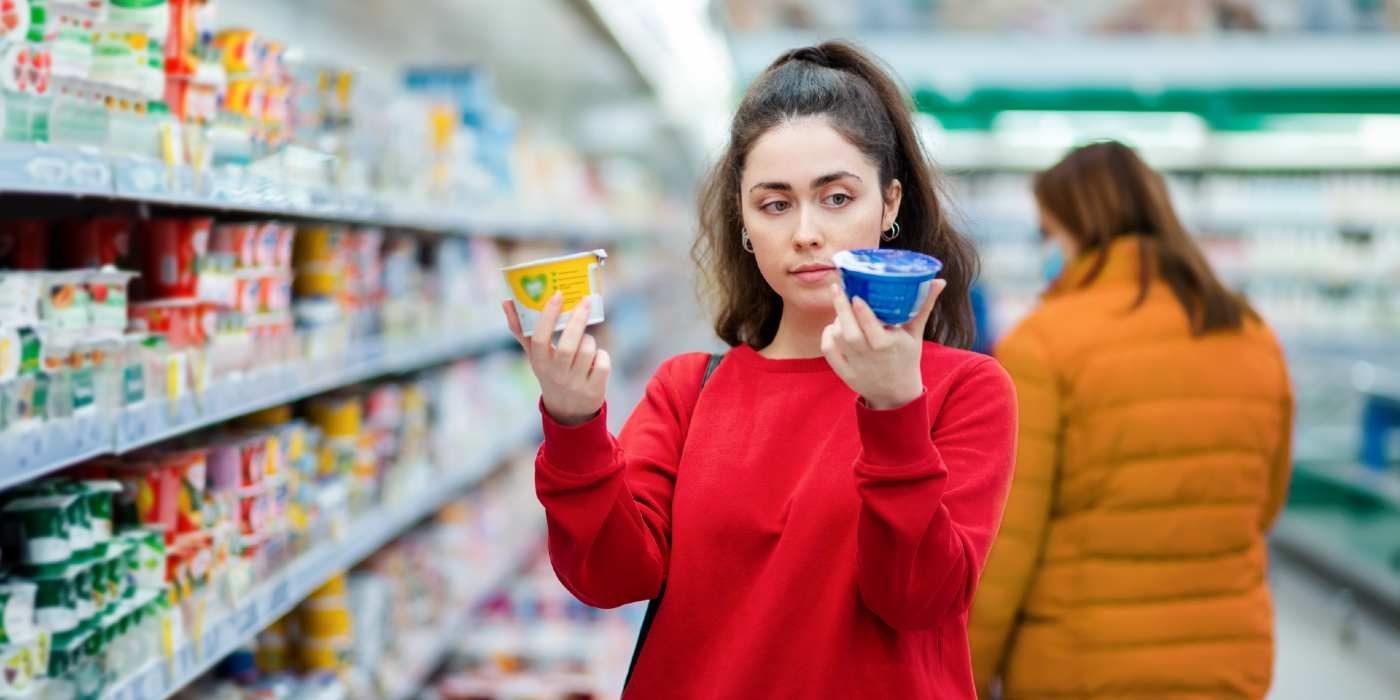
Food industry failing to meet Government’s Health Star Rating targets
New report shows it’s now time to make the system mandatory to protect our health
Australia’s food industry is failing to meet already low targets for displaying the Health Star Rating (HSR) on product packaging by a significant margin, according to the 2023 State of the Food Supply Report released today by The George Institute for Global Health.1
The annual analysis shows only 36% of products on supermarket shelves that should carry the HSR currently do, falling well short of the Government’s 50% uptake target for 2023, set as an output of the formal review of the HSR in 2019. The Department of Health is due to release its own update on progress early in 2024, using information it will gather up until mid-November this year, which is likely to reflect the Institute’s findings.
Senior Research Fellow in Food Policy at The George Institute, Dr Alexandra Jones, said the industry’s poor performance both on displaying the label and in improving the healthiness of foods compels the Institute to call out the failure of a voluntary approach, due to the known harms of unhealthy diets.
“Time’s up for the industry to demonstrate what they can do on a voluntary basis. It’s clear that they are not going to act without being compelled to do so. The HSR program will be 10 years old in 2024, however its uptake is slower than in at least 15 other countries where front of pack nutrition labelling is mandatory,” said Dr Jones. 2,3
“We’re now making a direct and urgent call for the Government to stipulate mandatory HSR usage on all eligible products, with appropriate penalties for non-compliance, and to start that process now to stop industry actively exploiting the system at the expense of consumers’ health.”
The 2023 State of the Food Supply Report: A Five-Year Review shows overall uptake of HSR on intended products* has remained static at 36% for the past three years, dropping from 40% since the targets were set in 2019 following a government review.
The report indicates industry is preferentially applying HSR to healthier categories and avoiding showing star ratings on packs of low-rating less healthy items. With HSR still missing on more than half of all products, consumers are being denied the chance to use this information.
“We commend the companies that are proactively applying the HSR and making changes to recipes to improve their ratings. For all others, the voluntary approach appears to have provided little incentive to provide information transparently to consumers to improve public health. The rating is a tool to improve the accountability of the food industry for its products - it’s time they stepped up and took responsibility for the healthiness of their products. That means displaying the rating, and improving nutritional quality if they want to get a higher rating,” continued Dr Jones.
“Our Health Star Rating system is supposed to be the Government’s flagship initiative to improve Australians’ diets but while manufacturers can pick and choose what products they want to display the ratings on, the food industry is actively eroding the ability for consumers to trust the system and make healthier choices about what they eat,” she said.
Diet-related diseases like heart disease, stroke, type 2 diabetes and some cancers are among Australia’s biggest killers.
“We’re disappointed but not surprised by the results of this year’s State of the Food Supply Report from The George Institute,” commented Jane Martin, Executive Manager of Food for Health Alliance, which advocates for the HSR to be mandatory. “The voluntary nature of the Health Star Rating means that there just isn’t a strong enough incentive for food companies to improve the healthiness of their products. Put simply, they are prioritising profits over the long-term health impacts of their products on Australians.
“If we were to give the industry an overall rating of their own on the basis of these results, we’d have to give them about half a star to reflect the obvious low level of concern many food companies have for the health of their own customers,” she said. “Since they have failed to act voluntarily, we need to call time now on the voluntary targets and move to a mandated system.”
The food industry has resisted mandatory HSRs to date on the basis that it would be costly and time-consuming to implement, yet a strong precedent exists, according to Dr Jones. “In 2019, companies were given two years to apply country of origin labelling on almost all products and our 2021 report showed 90% had complied. They have shown that it can be achieved but only when mandated.
“Until HSR is mandatory, we recommend consumers exercise caution - if a product is failing to display HSR on pack, there's a good chance it’s a less healthy item,” she said.
The State of the Food Supply Report is the largest annual appraisal of the healthiness of more than 30,000 packaged food products available in Australia. Now in its fifth year, the report uses data from in-store surveys collected from March to June 2023 as part of The George Institute’s FoodSwitch program.
Other key findings:
- Uptake of the HSR on intended products dropped from 40% in 2019 to 36% in 2023
- On current trajectories, the next targets of 60% (by 2024) and 70% (by 2025) are unachievable within a voluntary framework
- Nine of the top 20 food and beverage manufacturers displayed an HSR on fewer than 50% of their products
- Only 16% of companies not in the top 20 engaged with the HSR policy
- HSR uptake was higher in categories with higher average ratings:
- The ten categories with highest HSR uptake had a mean HSR of 3.8
- Conversely, uptake was much lower in categories with lower average ratings, for example: jams (7% uptake / average HSR 1.7), confectionery (12% / 1.2), ice-cream (12% / 1.9) and cheese (20% / 2.7)
- Supermarket results for HSR uptake on their own brand products this year were:
- Woolworths – HSR on 93% of intended products; average HSR of 3.4**
- Coles – 89% / average HSR 3.3
- Aldi – 61% / average HSR 2.9
- IGA – 8% / average HSR 3.3
* Foods intended to carry the HSR system are those required by the Australia New Zealand Food Standards Code to have a nutrition information panel (NIP) and may also vary in nutritional composition.
** Average HSR calculated for all own brand products (i.e., intended plus permitted). More info
References:
- ‘State of the Food Supply Report: A Five-Year Review’, The George Institute for Global Health. November 2023
- Batista MF, de Carvalho-Ferreira JP, Thimoteo da Cunha D, De Rosso VV. Front-of-package nutrition labeling as a driver for healthier food choices: Lessons learned and future perspectives. Compr Rev Food Sci Food Saf. 2023 Jan;22(1):535-586
- Jones A, Neal B, Reeve B, et al. Front-of-pack nutrition labelling to promote healthier diets: current practice and opportunities to strengthen regulation worldwide. BMJ Global Health 2019;4:e001882






